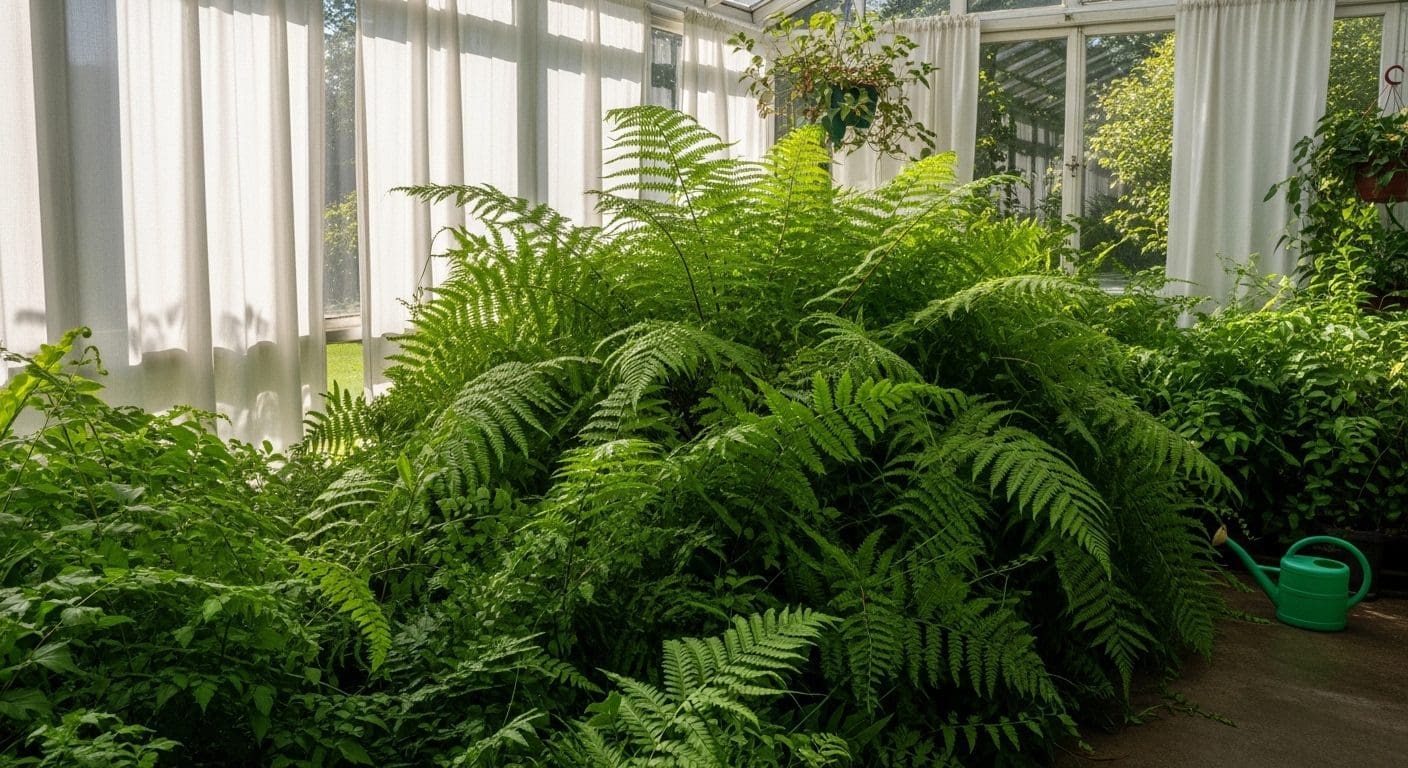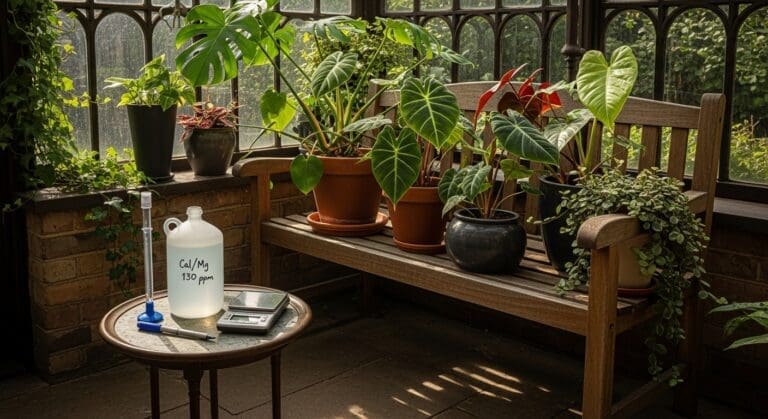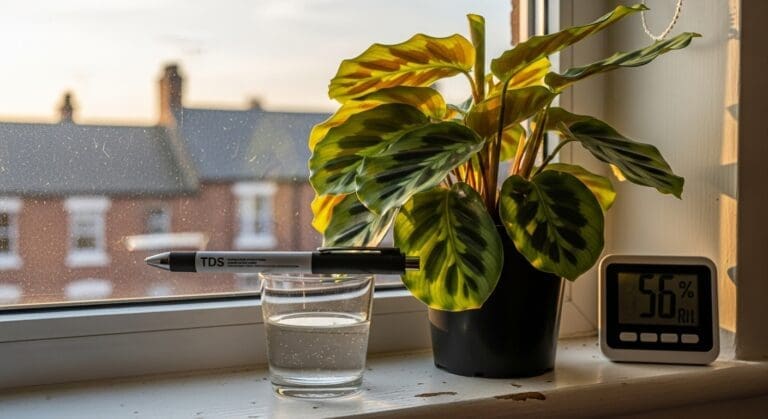Rare ferns have a quiet, almost mysterious beauty. From the delicate lace of a maidenhair fern to the architectural sweep of a staghorn, these plants bring a lush, tropical feel indoors. But with beauty comes challenge — and when it comes to rare ferns, getting the watering schedule right is the key to long-term success.
Many fern owners have asked themselves, “Am I watering too much? Or not enough?”. The truth is, rare indoor ferns can be both forgiving and fussy, depending on how well you understand their natural rhythm.
Why Watering Matters So Much for Rare Ferns
Unlike succulents or philodendrons, ferns don’t store much water in their leaves or stems. They rely on consistent soil moisture and humidity to stay healthy. A missed watering or two can result in crisp edges, yellow fronds, or, in the worst case, a full plant collapse.
“Ferns have evolved to live in the understory of forests, where moisture is abundant and consistent,” explains Mark Lewis, senior horticulturist at Kew Gardens. “Replicating that steady moisture level indoors is the single most important factor for their health.”
For more detailed botanical care advice, the Royal Horticultural Society offers guidance on indoor fern varieties (source).
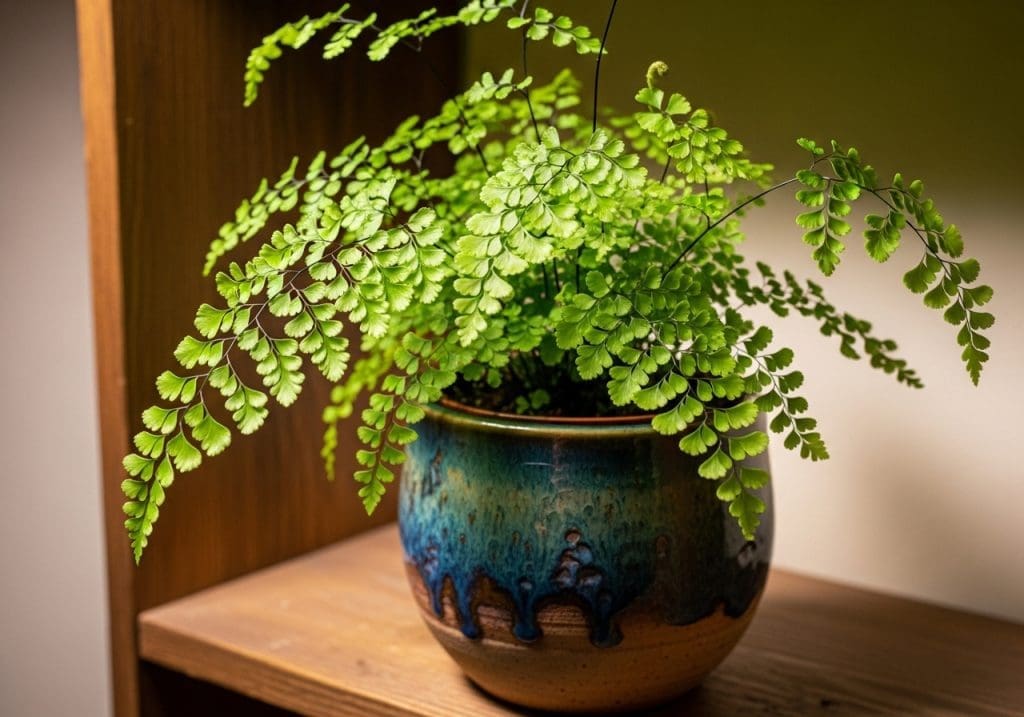
General Watering Principles
Before we talk schedules, there are three universal truths about watering rare ferns indoors:
- Even Moisture Is Key – The soil should stay lightly moist, never bone dry or soggy.
- Quality Water Matters – Rainwater or filtered water is best, as tap water in some areas can be too hard.
- Consistency Over Quantity – A regular, moderate routine beats sporadic heavy watering.
Seasonal Watering Schedule
Your fern’s needs will change throughout the year, based on light, temperature, and humidity.
Spring and Summer (Active Growth)
- Water 2–3 times a week, depending on room temperature and pot size.
- Check the top 1–2 cm (about half an inch) of soil — if it feels dry, it’s time to water.
- Keep humidity above 60% to prevent frond tip browning.
Autumn and Winter (Resting Period)
- Water once or twice a week, adjusting for heating systems that dry the air.
- In lower light, the soil stays damp longer, so avoid overwatering.
- Mist occasionally, or use a humidifier to counteract indoor dryness.
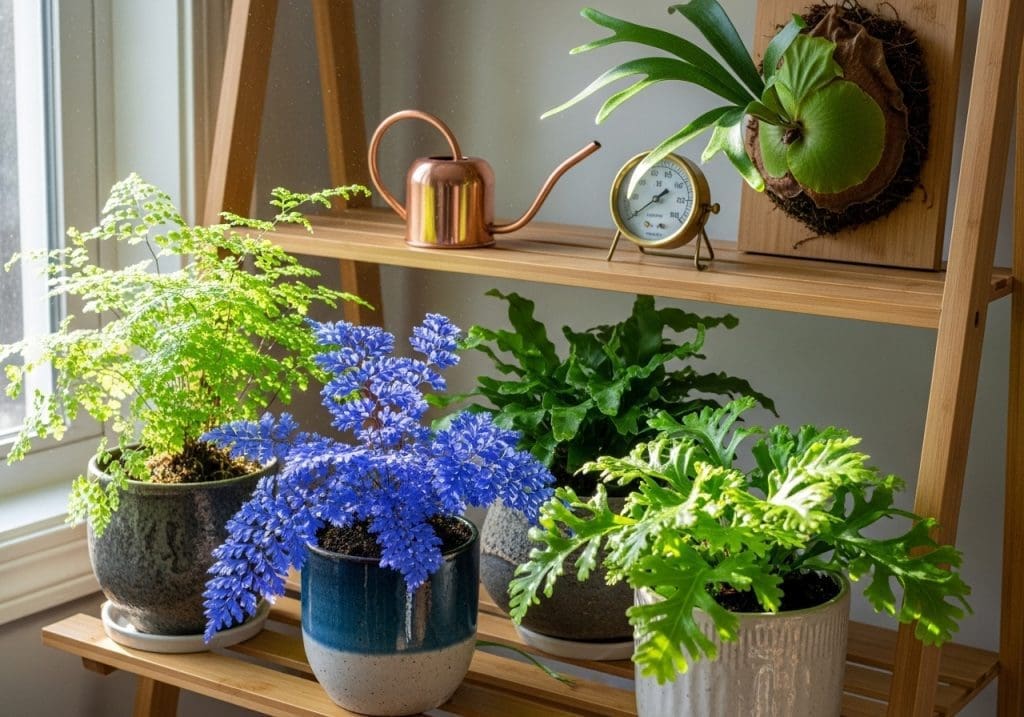
Factors That Affect Your Fern’s Schedule
Not all homes — or ferns — are the same. Your watering schedule should be flexible, guided by observation.
- Pot size: Small pots dry out faster than large ones.
- Material: Terracotta pots wick moisture away faster than glazed ceramic or plastic.
- Location: Plants near heaters, vents, or sunny windows will need more frequent watering.
- Fern type: Some species, like the bird’s nest fern, can handle slightly drier conditions; others, like maidenhair, need constant moisture.
Ask yourself: Is my plant drying out faster than usual this week? What’s changed in the room?
Watering Technique Matters
When watering rare ferns indoors, avoid simply sprinkling the top layer of soil. Instead:
- Water thoroughly until excess drains from the bottom.
- Discard any water left in the saucer to prevent root rot.
- Water at room temperature to avoid shocking the roots.
“Last summer, I switched from quick splashes to deep watering once the top layer dried. Within weeks, my fern’s fronds became lusher and more vibrant,” I recall, proving how small adjustments make a big difference.
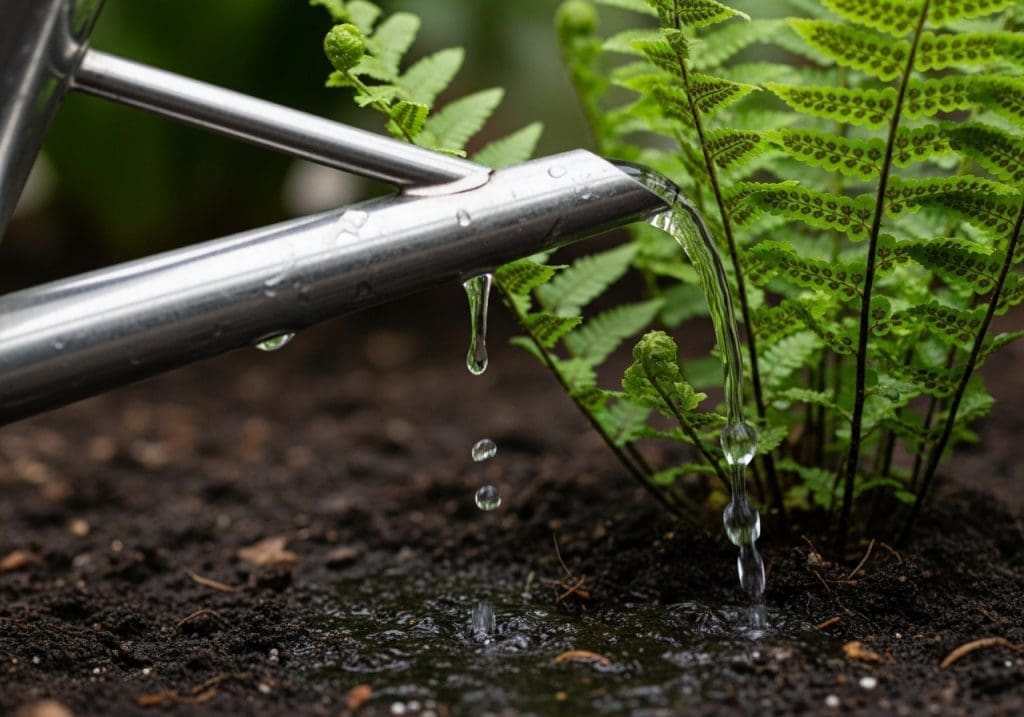
Signs of Overwatering vs. Underwatering
Overwatering
- Yellowing fronds starting at the base
- Wilting despite wet soil
- Mushy roots or musty smell
Underwatering
- Crisp, brown tips or edges
- Drooping fronds that perk up after watering
- Soil pulling away from the pot’s edges
Weekly Watering Routine Example
For a typical indoor setting with stable humidity (60–70%) and bright, indirect light:
- Monday: Light misting in the morning, deep watering if topsoil is dry.
- Wednesday: Check soil moisture; water lightly if needed.
- Friday: Deep watering; drain excess.
- Sunday: Humidity check and adjust with pebble trays or humidifier.
This is just a framework — your own plant’s needs should come first.
Personal Reflection: Learning to Listen to Your Fern
“I used to water all my plants on the same day, no matter what. It took losing a rare staghorn fern to realise I needed to treat each one individually.” Now, I check each fern’s soil and fronds before watering, rather than relying on a fixed calendar.
Humidity and Watering Go Hand in Hand
Many rare ferns are as sensitive to air moisture as they are to soil moisture. If humidity drops, they may dry out more quickly, increasing watering needs.
Practical tips to boost humidity:
- Group plants together to create a microclimate.
- Use a room humidifier near your fern display.
- Place pots on trays filled with water and pebbles, ensuring roots don’t sit in water.
Getting the watering schedule for rare ferns indoors right is a balance of consistency, observation, and seasonal adjustment. By paying attention to the signs your fern gives you — from frond colour to soil feel — you can keep it thriving year-round, whether in a sunny loft or a cosy garden flat.

RarePlantCare Editorial Team produces expert content on rare plants.
Our articles are AI-assisted and human-edited before publication.
We aim to provide practical, evidence-based guides for plant lovers worldwide.
Learn more about our Editorial Policy


